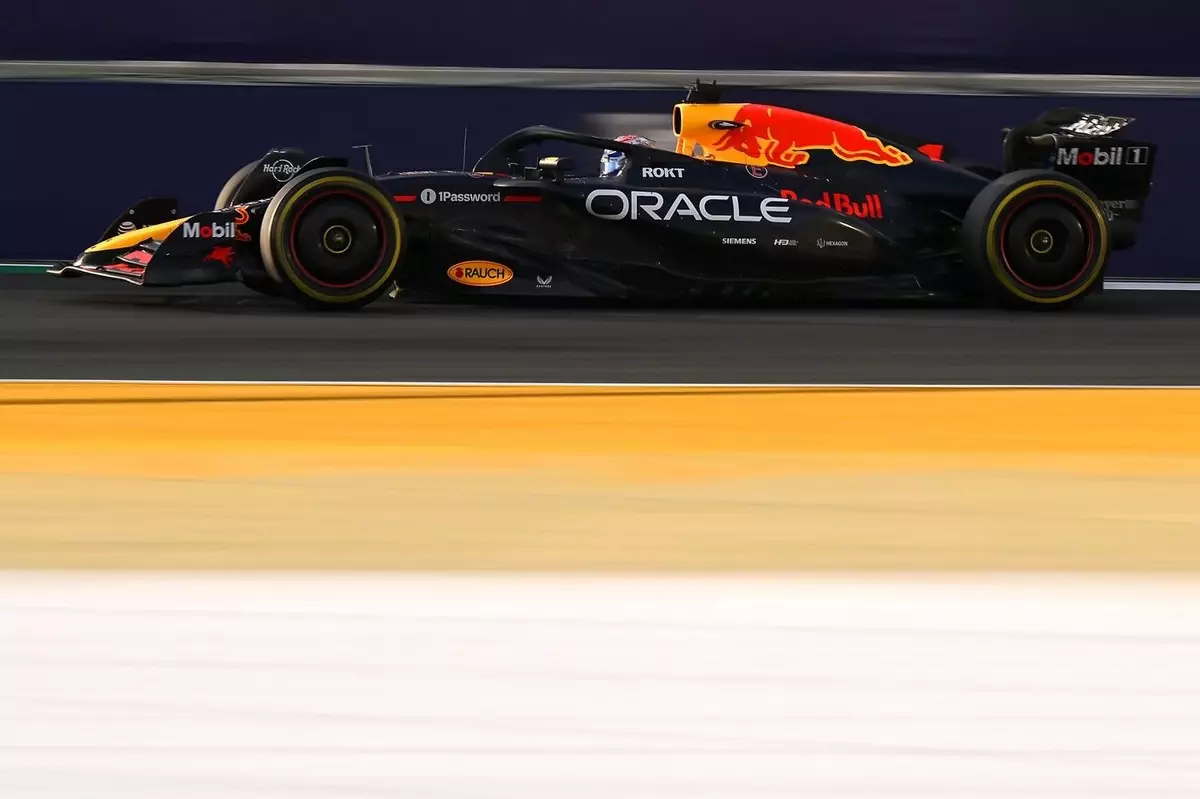Revving Up Resilience: The Challenges Facing Red Bull Racing
In the high-octane world of Formula 1, where cutting-edge technology meets unparalleled ambition, even the most successful teams can face unexpected challenges. Red Bull Racing, a powerhouse in the sport, is currently navigating a complex phase that some are describing as a looming crisis. The idea of turbulence within such a celebrated team is particularly striking, especially when considering their recent successes and the ever-competitive nature of Formula 1. There is a palpable tension surrounding their operations, reminiscent of the infamous headline “Crisis? What Crisis?” from British political history.
On the surface, the team appears calm and collected; after all, their star driver, Max Verstappen, is just a breath away from leading the championship standings. However, beneath that polished exterior lies a network of issues that have troubled their engineering department and created an unsettling atmosphere within the team. The mantra “Crisis? What Crisis?” may serve as a defensive stance for team principal Christian Horner, yet it seems to underestimate the growing concerns within the competitive paddock.
For someone like you who loves to dive deep into the intricacies of racing, understanding these challenges can provide a new appreciation for what happens behind the scenes. It’s not just about watching cars zoom around a track; it’s about recognizing the relentless pursuit of perfection and how even minor imperfections can lead to significant repercussions. Let’s explore some key takeaways to understand better what Red Bull Racing is currently facing.
Key Takeaways
- Red Bull Racing is dealing with engineering issues impacting their performance.
- The aging wind tunnel technology is hindering aerodynamic advancements.
- A new wind tunnel project signifies a commitment to innovation and transformation.
A Formula for Uncertainty
Recent developments at Red Bull reveal a narrative filled with uncertainty that could significantly impact their championship goals. Media interpretations following unusual hurried meetings among senior team members after races have been dubbed “crisis talks,” exposing an urgency that contradicts Horner’s public reassurances. The once confident atmosphere now feels fraught with anxiety—a pivotal moment in how the team addresses its current engineering woes.
This reality has become starkly clear as Verstappen, despite his undeniable talent, struggles to extract consistent performance from the RB21. A car that once dominated is now showing erratic behavior—fluctuating between moments of brilliance and mediocrity. It’s disconcerting to witness a car capable of victory performing below expectations, hinting at deeper issues with its development and correlation to simulated metrics. This inconsistency reflects modern racing’s demands, where every second counts and results must align with scientific precision.
The Wind Tunnel Dilemma

Ironically highlighted by the saying “the more things change, the more they stay the same,” Red Bull faces ongoing challenges related to their outdated wind tunnel. Described as “Cold War vintage” by Horner himself, this old technology paradoxically holds potential for both innovation and stagnation. Efforts to enhance their aerodynamic understanding hit roadblocks due to this antiquated setup, stifling their ability to visualize and refine performance accurately in real-time conditions.
Amidst these trials, they also face atmospheric conditions affecting data reliability—an obstacle prompting philosophical introspection within the team. How can an organization gain a competitive edge when its tools are inconsistent? This question transcends mechanics or engineering and speaks to innovation’s core. Each design iteration must undergo rigorous testing for actionable insights. As Warren Buffett’s investment paradox suggests, relying solely on outdated tools in a field demanding precision warns against potential pitfalls.
The Road Ahead: Innovation Meets Urgency
Despite ominous clouds hanging over them, there’s hope as Red Bull embarks on planning a new wind tunnel—a move signaling commitment to regeneration and transformation. Yet even with this forward-thinking strategy, doubts linger. Will forthcoming innovations translate into meaningful performance improvements or falter in execution like past plans?
As Red Bull approaches this pivotal transition, crafting a cohesive strategy becomes increasingly pressing. Sporadic excellence in races shouldn’t distract from restoring confidence in their development process fundamentally. At Formula 1’s pinnacle competition level lies no forgiveness; teams stumbling may find themselves trapped in recovery cycles versus progressing forward. Stakes rise continuously—and if Red Bull Racing wishes sustaining motorsport leadership—they must address these challenges comprehensively yet swiftly.
Final Thoughts
The line between success and failure is razor-thin in high-speed racing. For Red Bull Racing to reignite its championship quest, revising its approach while aligning team dynamics with engineering acumen alongside race strategy becomes imperative. Confronting reality honestly rather than dismissing cultural edicts proves crucial against challenges ahead—testing not only drivers’ mettle but engineers’ resilience alongside organizational fortitude amid adversity faced during forthcoming seasons.
Red Bull Racing Formula 1 aerodynamics wind tunnel innovation


Leave a Reply